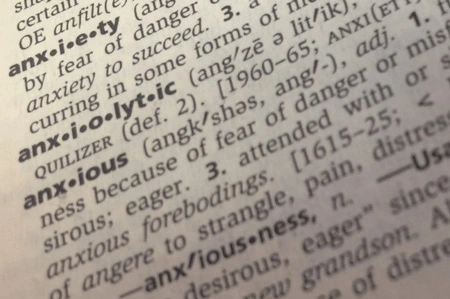
Approximately 40 million adults in the United States are impacted by anxiety disorders, which makes anxiety disorders the most common form of mental illness in the country. These disorders are characterized by extreme feelings of fear and dread. Those with anxiety will also sometimes experience physical symptoms like rapid heartbeat and sweating.
What OSHA Says:
The General Duty Clause, Section 5(a) states:
“Each employer shall furnish to each of his employees employment and a place of employment which are free from recognized hazards that are causing or are likely to cause death or serious physical harm to his employees;”
This clause doesn’t specifically outline how to handle work-related mental health issues. By raising awareness about anxiety disorders, we can change the culture surrounding mental illness in the construction industry.
Generalized Anxiety Disorder (GAD)
Let’s get something clear: anxiety is not always something you can just “get over.” Nor is it safe to pretend it’s not a big deal. Workers suffering from anxiety disorders may not be distracted, making them less attentive to safe operations. This increases the likelihood of accidents and injuries on a job site. The graphic on the left displays some of the signs of GAD. Remember that it will manifest differently in everyone. Those with GAD will experience pressing anxiety that interferes with their day-to-day lives.
Other Anxiety Disorders
In addition to GAD, some of the most common anxiety disorders are obsessive-compulsive disorder, panic disorder, social anxiety disorder, PTSD, and phobias. While we won’t go into the signs of these disorders in this post, you can click the links above for more information from the National Institute of Mental Health.
What You Can Do To Help
There are a few things you can do to help someone you know who may be struggling with an anxiety disorder:
Recognize the signs. Pay attention to the behaviors of your loved ones so you will notice if something is amiss.
Listen. Rather than belittling their anxiety by saying, “It’s not a big deal,” listen and validate their feelings.
Express Concern. Don’t be too afraid of telling them that you’re concerned about their well-being. Bring it up in a positive way, showing them that you only want to help.
Know when to seek help. If their behaviors are significantly impacting their work, school, family life, or social life, it may be time to meet with a professional. This is the point where you need to encourage them to set up an appointment.
If you would like more information or training on mental health and suicide prevention, visit our website. Good luck and stay safe!
This blog post is part of our ongoing series covering suicide prevention in the construction industry. Stay tuned for posts on recognizing the signs and symptoms of suicide; myths and misconceptions; and ways to maintain mental health.
